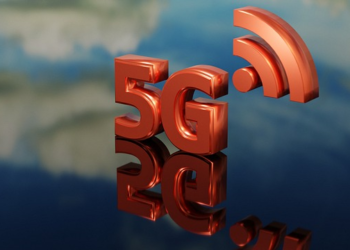Have you ever thought about living in a place where parking places magically direct you to an open space, traffic signals change to reduce congestion, and garbage cans notify you when they need to be emptied. This is not science fiction, it is the smart city of the future enabled by 5G technology’s transformative potential.
In this article, we’ll look into the exciting ways 5G is transforming the Internet of Things (IoT) space and shaping the future of urban living. We’ll also discuss how lightning-fast speeds, ultra-reliable connections, and massive network capacity are paving the way for a more interconnected and sustainable future in the cities.

Understanding the Building Blocks
5G Technology is the fifth generation of cellular network technology, 5G boasts about faster data speeds, ultra-low latency (response time), and the ability to connect a massive number of devices at the same time. Compared to 4G, it is like going from a dial-up connection to a lightning-fast fibre optic internet.
Internet of Things (IoT) refers to the ever-growing network of physical devices embedded with sensors, software, and other technologies that collect and exchange data. From smartwatches to traffic cameras, anything connected to the internet and sharing data is part of the IoT.
How 5G Empowers IoT in Smart Cities
Think of 5G as the supercharged engine and the IoT as the network of interconnected devices it projects.
Here is how 5G unlocks the true potential of IoT in smart cities:
1. Real-time Data Collection and Analysis: With 5G’s high speed and low latency, large amounts of data from sensors in traffic lights, parking metres, and environmental monitors can be collected and analysed almost immediately. This real-time intelligence allows city authorities to make data-driven decisions for better traffic management, resource allocation, and environmental protection.
2. Massive Device Connectivity: 5G’s ability to handle a massive number of connections is important for smart cities. Imagine millions of sensors installed in buildings, streetlights, and vehicles all communicating easily. This firm network creates a rich shade of data that paints a real-time picture of the city’s functioning.
3. Enhanced Reliability and Security: 5G networks are designed to be more reliable and secure than previous generations. This is important for critical applications like remote healthcare monitoring or smart grid management in a smart city, where data security and uninterrupted operation are number one.
Smart City Applications Powered by 5G and IoT
The impact of 5G and IoT goes beyond mere data collection. Here are some exciting applications transforming cities:
1. Smart Traffic Management: Real-time data on traffic flow allows for dynamic adjustments to traffic lights, reducing jamming and improving travel times.
2. Smart Parking: Sensor-equipped parking spaces can inform drivers of availability, eliminating the frustration of endlessly circling for a spot.
3. Smart Waste Management: Sensors in trash bins indicate fullness, allowing for well organised waste collection options and reduced fuel consumption.
4. Smart Grid Management: 5G-enabled smart metres can monitor energy usage in buildings, maintaining efficient power distribution and reducing energy waste.
5. Smart Public Safety: A network of interconnected cameras, sensors, and emergency response systems can significantly enhance response times and improve public safety.
Building a Smarter Future
The potential of 5G and IoT in creating sustainable, efficient, and citizen-centric smart cities is undeniable.
But to truly build a thriving tomorrow, we need to consider factors beyond just the technological advancements.
1. Bridging the Digital Divide: Not everyone has equal access to technology. For a truly smart city, resources are needed to bridge the digital divide. This could involve:
- Advanced internet access: Making internet connectivity affordable for low-income residents.
- Digital literacy programs: Equipping citizens with the skills to navigate the digital landscape.
- Public access points: Providing free Wi-Fi zones in public spaces.
2. Ethical Considerations and Privacy Concerns: The large amount of data collected by IoT devices raises privacy concerns. We need to establish:
- Clear data governance frameworks: Regulations that ensure responsible data collection, storage, and use.
- Strong cybersecurity measures: Protecting sensitive data from breaches and misuse.
- Transparency and citizen control: Giving people control over their data and how it’s used.
3. The Human Factor: Technology is a tool, and successful smart cities will be designed with people in mind. This means:
- Prioritising Reach: Designing technology that caters to the needs of all citizens, regardless of age or ability.
- Raising a culture of innovation: Encouraging citizen participation in developing solutions for their communities.
- Addressing the potential for job displacement: As automation increases, there is a need to invest in retraining programs to equip people with the skills needed for the jobs of tomorrow.
By accepting these challenges and working towards solutions, we can leverage the power of 5G and IoT to build a smarter future that benefits everyone, not just technology giants. Let’s embrace innovation while ensuring ethical considerations and human-centred design are at the forefront. Together, we can create a future where technology empowers people and enhances our collective well-being.
Conclusion
The future of our cities lies in embracing innovation. 5G and IoT working together is a powerful tool to transform urban landscapes into thriving ecosystems of technology and human well-being.
As we move forward, collaborative efforts between governments, businesses, and citizens are important to support the potential of this transformative technology and build smarter, more sustainable cities for all.

















